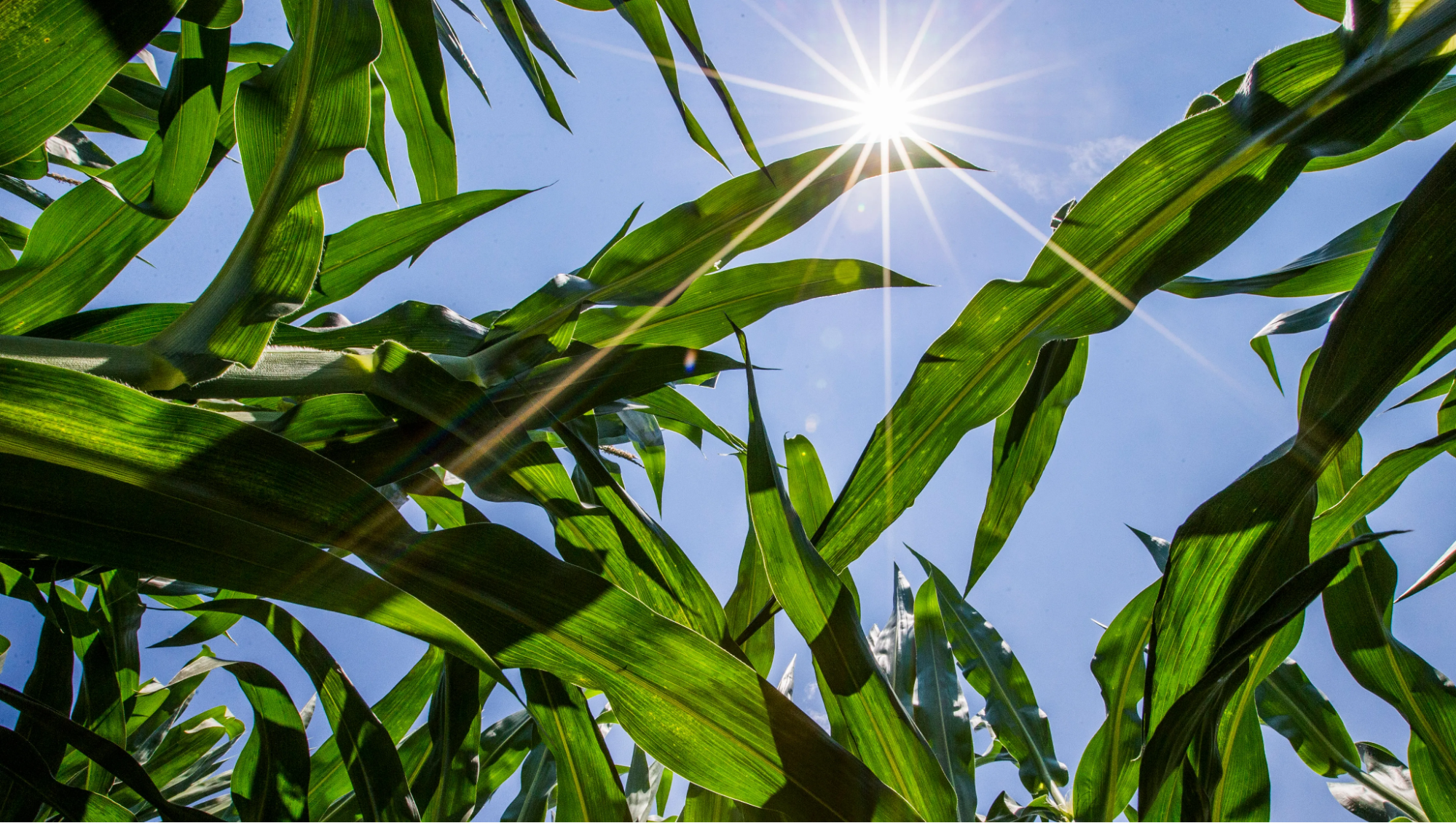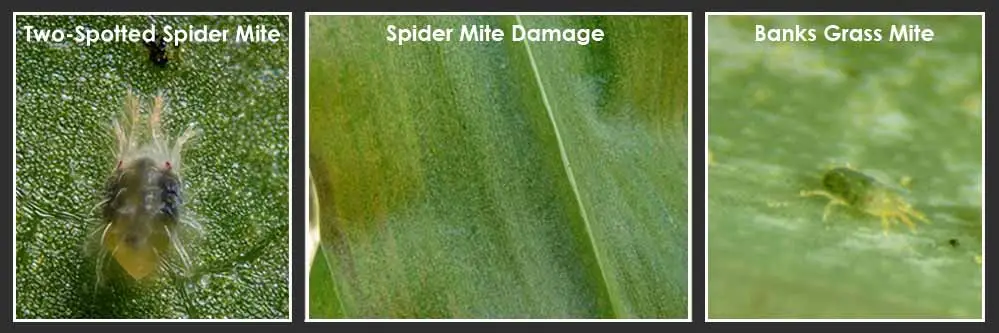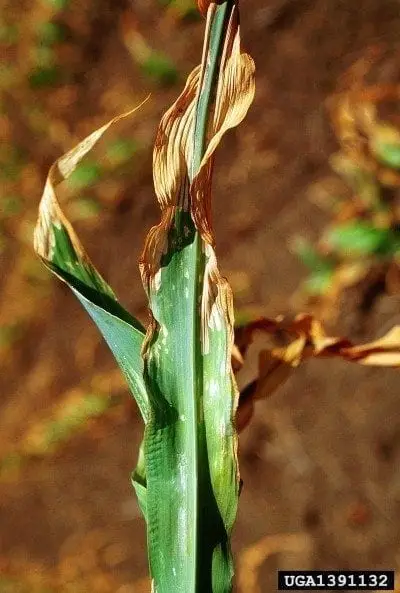Corn plants are quite sensitive to the environment they are kept in. Any change or issue with this environment directly affects the health of the plant. And sometimes this situation leads to the falling of leaves from the corn plant stalk.
So, what are the reasons behind a Corn Plant Stalk with No Leaves?
Excessive sunlight is a major reason behind a corn plant stalk with no leaves. Besides that, overwatering and underwatering, improper use of fertilizers, pest attacks, and diseases can also result in a stalk with no leaves. You have to replant the corn plant in a new suitable environment to save it from these issues.
These are the major causes behind this issue. There are exact solutions to these problems too. Keep reading to know it all!
What Does Corn Plant Stalk with No Leaves Mean?
Corn plant stalks with no leaves mean the stalk is dying. The corn plant stalk should generate more leaves after the plantation. But sometimes, the leaves on the stalk start to decrease instead of growing. This situation happens due to bad health conditions.
Similar to the dying dianthus, the corn plant also shows some symptoms while dying. No leaves on the stalk are such a clear sign that the corn plant is weak and expiring slowly. There are various reasons behind this phenomenon.
I will present the reasons and solutions for no leaves on corn plant stalks in the next section.
6 Reasons Behind Corn Plant Stalk with No Leaves: With Solutions
The corn plant stalk can lose leaves due to several causes. So, it is important to identify the cause first. For that, you must know the symptoms of different causes. Then the remedy is to be applied.
Let me present the six major causes behind the no-leaf problem here. Moreover, I will also provide solutions to these issues. So keep reading carefully!
Reason 1: Excessive Sunlight
One of the main reasons behind a corn plant stalk with no leaves is excessive sunlight. Sunlight is essential for the growth of corn plants. But too much sun causes more harm than good. For this reason, sunlight can be termed a necessary evil for the corn plant.

There are many bad effects of exposing the plant to direct sunlight for a long time. Just like the dried dahlia, corn plants also dry in too much heat. Excessive sunlight burns the leaves of the corn plant. It leaves scorch marks on the leaves.
The overall humidity around the plants decreases because of the heat of the sunlight. As a result, the plant starts to lose leaves.
Solution:
The main problem of excessive sunlight is the removal of moisture and humidity. Here are solutions to this issue.
- You can relocate the plant. Replant the corn plant in a place where sunlight falls for a certain time of the day. However, make sure that the soil is not too dry while relocating the plant. Carefully, use a trowel to take out the plant.
- If you are unable to relocate the plant, make sure to water it frequently. Then the plant will be able to retain the water.
- Plant other house plants around the corn plant. The combined evaporation and transportation of these plants will help to raise the humidity and moisture.
- You can use a tray filled with pebbles for holding the moisture. Fill the tray with water. But the water should not wet the top surface of the pebbles. Then place the corn plant pot on it. This water will now provide the required moisture to the plant.
Follow these methods to neutralize the effect of heat from excessive sunlight.
Reason 2: Too Much Watering
Though water is very important for the corn plant, too much watering can damage it. Excessive watering causes fungus in the root of the corn plant. As a result, the affected roots can not breathe. Then the corn plant starts losing leaves.
Another symptom of too much watering is very stinky and wet soil near the stalks. Moreover, the leaves start to turn brown. However, this problem can be solved and the corn plant can be saved from death.
Solution:
To save the plant from this situation, you must move the plant from the wet soil. Here is a step-by-step guideline for you.
- Lift the plant gently and replace the wet soil with new soil that has a balanced mixture.
- Check for fungus in the roots while replanting the plant. Fungus-affected roots are black and smell bad. Trim the fungus with a sterilized knife.
- Make sure that the pot containing the corn plant has a working drainage system.
- Trim some leaves from the stalk to release the pressure on the few remaining roots. Then replant it in the new soil.
Follow these steps properly to save your corn plant from too much watering.
Reason 3: Too Little Watering
Just like overwatering, too little watering is also bad for the corn plant. Little water prevents the plant from getting sufficient nutrients. As a result, it becomes weak and the leaves fall out. The soil becomes very dry in this situation. Also, the color of the leaves changes to lightly brown and becomes crispy near the edges.
Solution:
The best fix for this problem is to ensure adequate water for the corn plant. But do not pour a bulk amount of water at a time. The plant will be damaged as a result.
Rather supply small amounts of water and keep the soil moist. Follow this procedure for a few days. Also, cut off the brown leaves as they won’t grow back.
Reason 4: Pest Attack
Another big reason behind the stalk losing leaves is pest attacks. Spider mites, mealy bugs, thrips, and aphids attack the corn plant. They suck sap from the leaves of the corn plant and cause infestation.
The plant becomes weak just like head-bitten tulips. As a result of this, the plant shreds leaves. This type of similar phenomenon can be observed in tulips

The color of the corn plant leaves converts to yellow and then brown before wilting. Then they finally drop from the stalk. Eradication of pests is necessary to stop the shedding of leaves.
Solution:
Here is a quick guideline for saving your corn plant from the attack of pests.
- Identify the plant with pests and separate it from all the plants.
- Use a mild flow of water on the plant to remove the pests. Make sure that all the pests are removed.
- Use a safe insecticide on the plant. This will prevent the pests from coming back.
- You can also use homemade insecticides on the plant. However, not all homemade insecticides are safe. So use a little of the insecticide on a single leaf. Observe the effect and then apply it to other leaves.
Once the above procedures are completed, you can take back the plant to your garden.
Reason 5: Diseases Like Soft Rot and Root Rot
Corn plants are vulnerable to several diseases. Root rot and soft rot disease are the most common diseases they get very easily. These diseases cause wilting of leaves and a bad smell. Then the leaves fall out.
Solution:
There is usually no remedy if the plant gets affected by soft rot disease. You will have to separate the affected corn plant and bury it. Then the spread of this disease to the other neighboring plants can be stopped.
You can use a mixture of hydrogen peroxide and water to treat the root rot disease. Mix one part of water with two parts of Hydrogen peroxide. Then apply the mixture to the soil. This will help to treat the soft rot disease in your corn plant.
Reason 6: Improper Fertilization
It is very important to supply fertilizer to the corn plant but the amount must be accurate. Too little fertilizer will not provide the necessary nutrients for the plant. So, the corn plant will become weak and shred its leaves.

On the other hand, the plant can not process too much fertilizer either. The potted corn plants do not have extra soil to process the excess fertilizer. These extra fertilizers produce a layer of salt on the soil. This is bad for the plant and causes the corn plant to lose leaves.
Solution:
You have to get rid of the salts to save the corn plant. So, lift it from the soil and wash away the salts from the root with running water.
Make sure to remove the salts from the pot too. Add enough water to the pot and let the water pass out below the pot. This will clean all the salts.
Now, replant the soil. Do not add any fertilizer at least for a month. Let me tell you the correct dose of fertilizer for the corn plant. Use an all-purpose liquid fertilizer at half strength once a month during the growing season. This will be enough for the plant’s health.
These are the common causes and solutions of corn plant stalk with no leaves. Follow the remedies properly to save your corn plant from dying.
Frequently Asked Questions (FAQs):
Will corn plant leaves grow back?
Yes, corn plant leaves will grow back. You can prune the corn plant according to your need. However, corn plants do not require regular prunings. But you can prune it if you desire. Trim 6 to 10 inches from the top of the plant. The plant will again grow without any issues.
Does corn need daily watering?
Corn plants need watering when the soil gets dry. Watering the plant once a week is enough for the plant. These plants are compatible with dry and hot climates. Anyway, if you keep the corn plant under direct sunlight for a long period, you might need to water it more. Or else, the plant might die.
Can you cut the stalk of a corn plant?
Yes, you can cut the stalk of a corn plant. Once you cut the stalk, the plant will keep growing from that point. It will recover from the cutting very quickly. Moreover, you can plant the stalk to grow a new corn plant. The new cuttings grow roots very fast if prolonged light is ensured.
Conclusion
This is all on your query: Corn Plant Stalk with No Leaves. I hope that now you will be able to solve this issue without much hassle.
Use a mister to spray water on the corn plant every few days. This will ensure adequate moisture for the plant.
- Why Are There Still No Tomatoes in My Tomato Plants? Let’s Fix the Issue! - July 13, 2023
- Water Propagation White Stuff on Roots: Everything You Should Know! - July 11, 2023
- String of Dolphins Drying Up: Solved! - July 11, 2023
